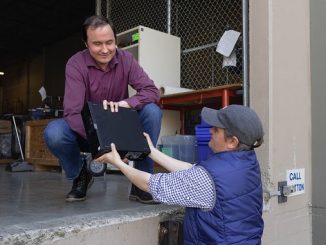Like it or not, the age of artificial intelligence (AI) is upon us. While Canada has every reason to be ahead of the implementation curve, with a highly educated workforce and excellent access to cutting-edge tech, history suggests Canada will be well behind on the path to AI adoption.
How do we break the cycle and become technology leaders?

In a country where small companies dominate and few have the capacity to explore new ideas without support, the federal government must play a bigger role in creating the conditions for success.
We already have companies who understand the transformative potential of AI. But we need to have a highly skilled talent pipeline to harness the potential of AI. This is where academic partners stand to play a much more integrated role in Canada’s innovation ecosystem.
Canada’s polytechnics – our advanced technology post-secondary institutions – have capacity to both support business innovation and train next-generation talent. Targeted government investments can magnify this potential.
As innovation intermediaries, polytechnics are able to walk companies of all sizes through the adoption of new technology. Their applied research spaces offer labs and workshops equipped with tools and technology with which businesses should be experimenting. Faculty, research staff and students are actively looking for opportunities to apply new solutions to today’s stubborn challenges.
For example, Sheridan’s Dynamic Digital Humans research is addressing critical gaps in dementia care through augmented and virtual reality. Partners at Reimagine AI are working closely with the polytechnic to build enhanced and human-like digital characters for its mobile app, which will provide meaningful companionship for Alzheimer’s patients and others suffering from memory loss conditions.
That kind of hands-on approach ensures a polytechnic education is pragmatic and industry-aligned. Most partners point to strings-free intellectual property as a major benefit of polytechnics, enabling them to build their businesses around new approaches uncovered during research. Another benefit is student involvement, ensuring talented graduates are ready to fill the labour market gaps created when companies adopt new technology.
Yet, because federal funding for polytechnic applied research continues to significantly lag that available to their university counterparts, this isn’t happening at scale. In an economy reliant on small businesses, Canada does not have an innovation ecosystem designed for their needs.
The challenge doesn’t end there.
Canada equally requires a workforce that understands the potential of new technologies like AI and how to use them. To address this need, polytechnics are finding ways to integrate emerging technologies into their classrooms.
At Saskatchewan Polytechnic, for instance, they are transforming mining engineering education by infusing 3D digital mining and simulation into their programming. Their virtual mine is intended to simulate a real mining environment using virtual reality headsets, creating immersive simulations to explore mining environments without physical risk and fostering an understanding of safety protocols and procedures. This initiative was undertaken in partnership with the International Minerals Innovation Institute, which invested more than $100,000 in the project to enhance learning among both students and industry.
This approach to training partnerships is increasingly common and we need more of them.
Companies are recognizing that talent shortages are holding them back, faced with difficulty both recruiting new entrants with the right skills and keeping their existing workforce current. Increasingly, businesses realize they need skin in the training game.
With the ever-increasing pace of technological change, unlocking industry investments in training will be critical to staying ahead of skills demand. Here, the federal government could better incent industry co-investment by offering to fund half of the purchase of new equipment, tools and technologies. The ability to train existing employees alongside new entrants is an added bonus.
Canada’s future productivity will rely both on the adoption of emerging technologies and the presence of a skilled workforce ready to capitalize on them. A couple of smart investments – in partners who can support business applied research and the equipment needed to train the technology talent pipeline – will go a long way in ensuring Canada is ready for an AI-enabled world.
****
About the author:

Ricardo Arena is a policy analyst at Polytechnics Canada, a national association of the country’s leading polytechnic institutions.



